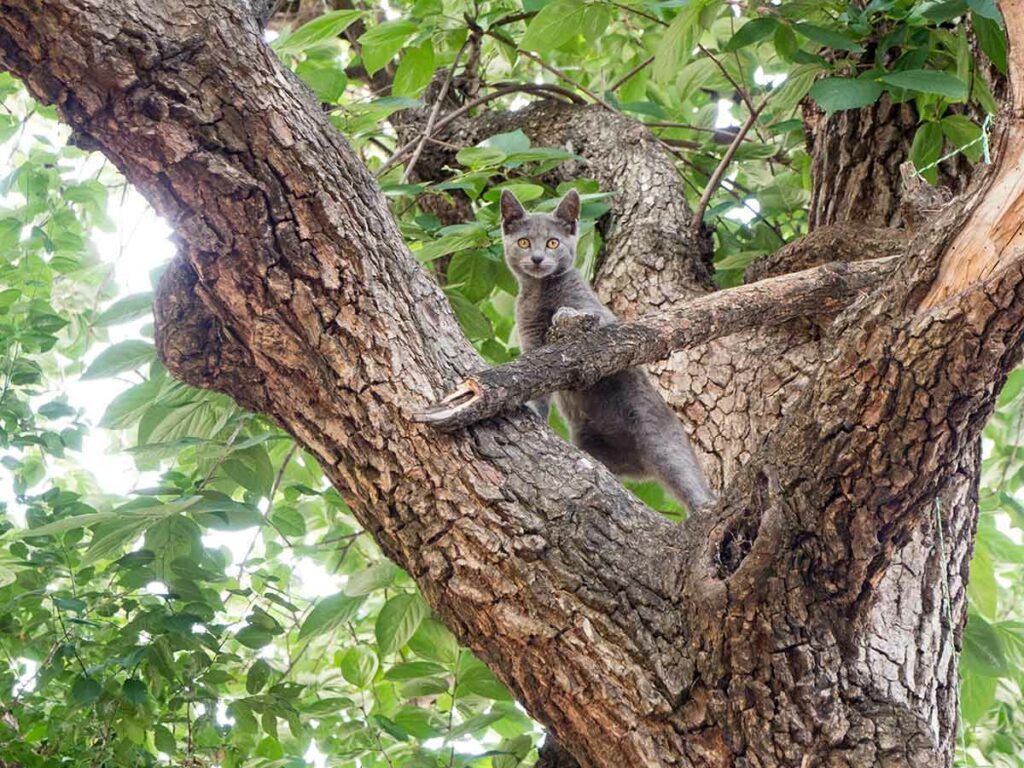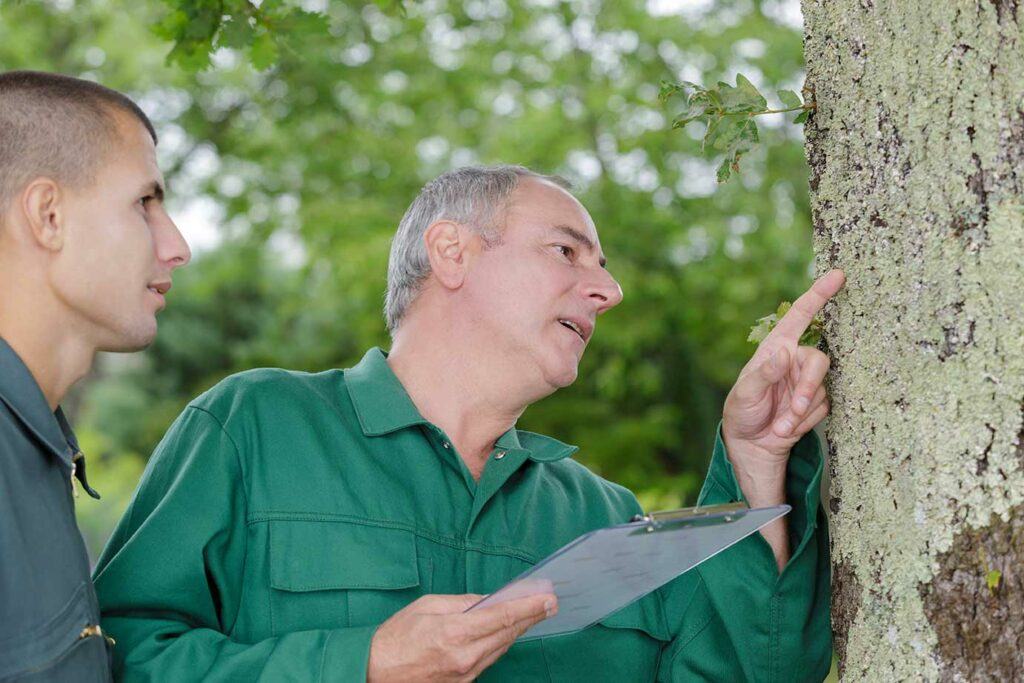To an untrained eye, it can be hard to tell if a tree poses a risk of failing (falling/breaking). Without obvious signs of infestations, disease, or decay, a tree on your property may have less obvious signs of failure that only an expert can detect. To maintain the health and safety of the trees on your property, a routine tree risk assessment by a certified arborist is incredibly important.
What is a Tree Risk Assessment?
A tree risk assessment (TRA) is a thorough evaluation of a tree to determine the risk of it failing. During a TRA, your arborist will inspect the tree and the area around it to provide a Tree Risk Assessment Report. This report will conclude with the arborist’s determination of the level of risk that the tree poses and a recommendation for ongoing care, or removal, in the event it is determined to be too far gone to save.
During a TRA, your arborist can also complete a Basic Tree Risk Assessment Form that will be a record of the full inspection. The form outlines the examination of the tree itself, as well as the surrounding conditions and any changes to the same. The arborist will note the distance from structures and other trees, condition of the soil and root system, recent damage, and other risk factors. Overall, a TRA report ensures the tree receives the best ongoing care, as well as aiding in the anticipation of any likely risk of failure in the future.
Why are Tree Risk Assessments Important?
Caring for the trees on your property may not be akin to having a child or adopting a puppy, but it is still an incredibly important responsibility. Trees are not only a beautiful part of our landscape, but they are also an integral part of the local ecosystem. Losing a treasured shade tree can be devastating. That’s just one reason why taking every precaution, with regard to maintaining its health and assessing it for failure, is so important.
Aside from sentimental reasons, having potentially dangerous trees removed will not only help beautify your property, but also help keep you and your neighbors safe. The collapse of a tree can cause serious harm to people as well as tremendous property damage.
How Often Should You Have Your Trees Assessed?

Even if your trees have received excellent care and appear to be healthy, it is recommended that trees be assessed, depending on age and size, approximately every three years. This can help ensure you are aware of any possible risks and help reduce your liability. It is also a good idea to have your arborist conduct a TRA following any storms or extreme weather events to identify and address any damage.
In addition, it’s best to call a certified arborist for a tree risk assessment, if you notice any of the following warning signs:
- Obvious signs of decay
- Fungus, holes (even tiny ones), or insect damage
- Complex tree shape with many leaning and twisting branches, especially if it sways
- Leaning, especially if it’s on a slope or near a building
- Crowding buildings, utility lines, pools, etc.
- Driveways and sidewalks being pushed up by roots, especially near underground utilities
- Mottled or yellowing leaves, if not deciduous
- Changes to the soil that could impact the roots, such as nearby excavation or stump removal
- Loss of windbreak, natural or otherwise, especially if the tree sways in the wind
- Obvious damage from a storm, fire, flood, earthquake, car accident, or other physical trauma
- Lightning strikes during the dry season (Call 911 first! They can smolder for days, even weeks.)
What is a TRAQ Certified Arborist?
Certified arborists, who have a Tree Risk Assessment Qualification (TRAQ), have completed an intensive International Society of Arboriculture (ISA) TRAQ training course and have passed a challenging 100-question test, and a one-hour, hands-on exam. The course teaches arborists the best methods to determine and calculate tree risk. Arborists learn how to quantify dozens of factors in a holistic way, using a standardized process and checklist. These factors include:
- The species of the tree
- Weight
- Any degree of lean
- The tree’s overall structure
- Fungus, insects, or other infestations
- Wind forces
- Soil conditions
Sonoma County Trusts the TRAQ Certified Arborists at Vintage Tree Care
An arborist with a TRAQ certification is an expert at calculating the chance of a complete or partial failure of a tree, and what sort of damage they could cause without proper care or intervention. The TRAQ certified arborists at Vintage Tree Care have been assessing trees throughout Sonoma County for over 25 years. Our arborists proudly provide personalized tree care to every customer and each tree, shrub, and other woody plants on your property to ensure they thrive year-round.
We want to help ensure our community remains beautiful, healthy, and safe for years to come. Contact us by phone at (707) 495-4686 or online to learn more about our personalized arborist services today.


